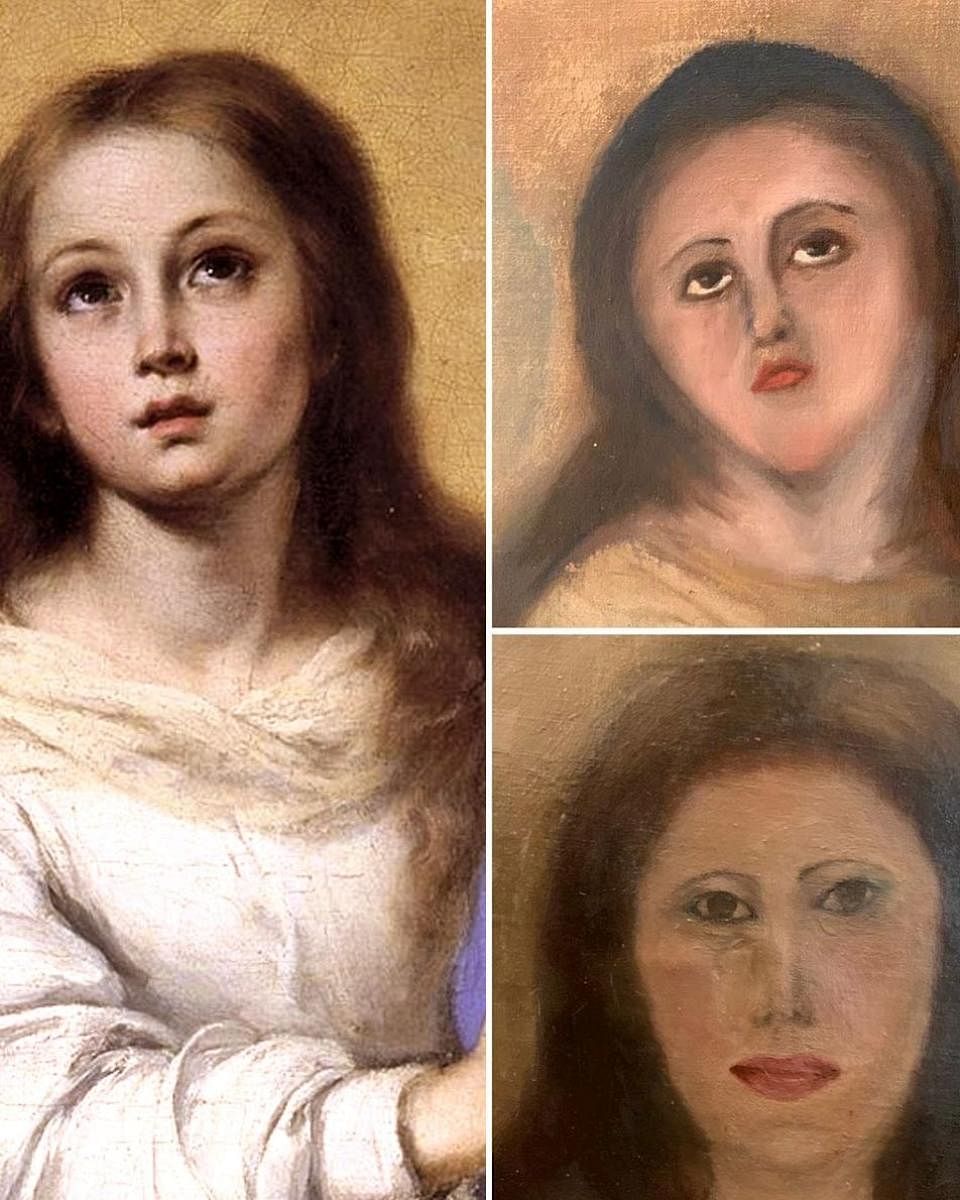
The recent botched-up restoration of a painting of Virgin Mary by Baroque artist Bartolomé Esteban Murillo has left the internet in splits. The painting belonged to an art collector in Spain, who must now be wringing his hands in utter despair. The unfortunate results, brought about by a furniture restorer, destroyed the artwork and led to many creative and hilarious memes; but, hidden within the hilarity, is an issue that clearly requires widespread awareness, not to mention stricter regulations.
Restoration of any artwork as well as cultural and historical artifacts is a specialised field that necessitates knowledge of several subjects such as chemistry, anthropology, art and art history, techniques and technology. Botched-up jobs may cause irreparable damage, both financial and cultural, to art and artifacts of immense value.
Damaged paintings at Ajanta
In the late 1920s, ill-informed conservation efforts damaged the paintings in two of the caves at Ajanta. The paintings turned a dark reddish brown, obscuring the images. Subsequently, it required a lot of effort to restore them layer by layer.
In general, restoration involves assessing artworks for damage, documentation of the condition, mechanical and chemical cleaning, touching up, and finally, repairing any damage that may have occurred over time. The materials and techniques used in restoration are specially selected based on their chemical properties, their ageing patterns and their reaction or effect on the existing pigments and surface of the artwork. Paint layers are carefully built up and any tear in the canvas or paper is repaired painstakingly. Once the work is complete, the documentation is done again of the results.
No DIY please!
Evidently then, DIY is not advised when it comes to restoring valuable artworks; and trying to clean it with water or any other liquid can have disastrous effects. Now, most museums have a climate-controlled environment, where they essentially maintain low temperature (around 20 degree Celsius) and relative humidity, have special filters for airborne particulates, control air circulation and ensure special lighting. These kind of measures are not viable in homes and offices.
However, there is a theory that one does not require such stringent conditions to protect most artworks; after all, museums have tremendous footfalls. Therefore, simply adopting sensible measures in terms of lighting, temperature and humidity in home and office environs will help conserve the art and increase longevity. The important thing is to know what to do when there is any damage. It is here that clearly defined guidelines can be useful. Awareness is the first step; it is essential to refrain from attempts to repair at home or to approach amateurs.
On a related note, when there is extensive damage and the work is completely restored or when ongoing conservation efforts constantly tamper with the work, it is natural to raise questions regarding the work’s authenticity.
Another consideration is about natural ageing. Several contemporary artists feel that a certain amount of natural ageing of organic and inorganic materials is acceptable and this over-emphasis on pristine or original appearance and condition is not necessary. Opinions vary widely on this and it could perhaps be best left to personal preferences.
The author is a Bangalore-based art consultant, curator and writer. She blogs at Art Scene India and can be reached on artsceneinfo@gmail.com
Dab Hand is your fortnightly art world low-down. It will tell you all about what fresh ideas are out there, what to collect and what to admire from afar. And, of course, what not to.